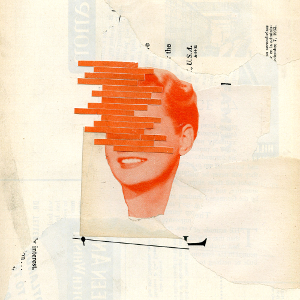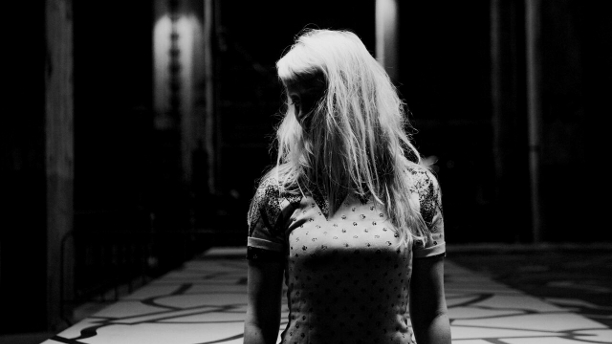It seems confusing at first that SØS Gunver Ryberg insists on nature as a primary influence on her music. After all, her breathless, Industrial-leaning approach to Techno which fits in so well on Samuel Kerridge’s new label Contort, does not really evoke images of her native Denmark’s quiet countryside. Her debut EP Aftryk follows a split release with veteran experimentalist Cristian Vogel on The Tapeworm in 2014, but sounds quite different from the pulsating drones you could hear on Moved By Magnet. In fact, her sound seems to rather adequately describe the aesthetics of places like Berlin’s Kraftwerk, which served as a backdrop for her performance at Atonal in 2014. We caught up with Ryberg to learn more about her and the ideas which inform her music.
When did you start making music and for what reason?
I worked in the performing arts for quite a lot of years as a performer. I felt something was missing. I had more to express and missed creating on my own. When I discovered creating through a computer I was driven by a passion, I never felt when I as a child tried to learn instruments. I started off by teaching myself to create in various programs. I was interested in the expression of sound art and the merging of various media. Growing up I used to record casettes through the internal mic in a tape player, I found. I would record sounds around me, me trying to play intuitive improvisations on my mothers cowboy piano (It was completely out of tune), do mix tapes, my diary, have conversations with friends etc. I remember, I really wished for a microphone but no one around me was technically interested. My first piece created on the computer, “Das Himmelhund” a sound installation, was accepted to the juried exhibition “The Spring Exhibition in Denmark” presenting artists from all over the world. More than 3000 pieces were sent to this exhibition. Only few pieces were selected. I was very thrilled and it gave me confidence to continue and years later I started doing electronic music.
Which record had the most severe impact on your life and why?
I would actually say the soundscape of Svalbard had the most severe impact on me. Hearing the acoutics in such a landscape. The raw power of nature. It was a lifechanging experience.
You have been active in many different fields, from performance art to video game scores. The press release states that you work „at the intersection of electronic music and sound art“. Do you even consider yourself part of the electronic music scene and if not, what might perhaps be the advantage of that?
I feel I’m part the experimental electronic music and sound art scene. I also have a part in other scenes as I have various ways/formats to express my music. There is freedom in this. When people asks me to do collaborations they have heard my expression from other things I have done. Often I’m involved from the very beginning on the concept development so it becomes more like a gesamtkunstwerk. I mainly collaborated with choreographers, scenographers and film directors. To my experience it has been very stimulating and given me new perspectives in many levels. My commissions are often at special locations where I’m asked to create a piece. Most times I can choose the format, e.g. multichannel installation, concert, a morph between formats.
After everything you have done so far, Aftryk seems to come a bit late. What took you so long to produce a proper EP?
I was focused on the ephemeral expression of music through installations, concerts, site specific multichannel pieces etc. With time it became important for me to do something not ephemeral. The way I had been presenting my music is very hard to document. It only exists shortly. It’s a condition I find very fascinating but I reached a point where I felt releasing was important as a next step. The experimental music scene I come from doesn’t emphasize releasing in the same way as I experience with the electronic music scene. So to release and put my music into this format was challenging as I in beginning felt I “locked” my music down. Now after the process of the EP I have changed my perspective I discovered how the music keeps on changing in many ways. I will continue to do more releases.
What made you turn to the rather limited physical format of a vinyl EP now? The title seems to
suggest that the physicality of it was an important factor.
Yes it refers to various influences and as you say the physicality is very present. The exploration between the physical and the ephemeral. When I was in the proces of the EP I was very inspired by an inscription in the pavement close to where I live with the words “La terre porte ton empreinte / Jorden
bærer dit aftryk” („the earth bears your imprint“). The inscription is made into a gravestone and by the entrance to a cemetery. I thought a lot about these words and thought about how I had touched the 60 million old footprint of a Pantodont Inside of the mountain in Svalbard in 2009. The physicality and dimensionality of history became very present and unpredictable. Our time here on earth. Doing this EP became a print documenting a period of my music.
Considering your work usually comes from and takes place in rather conceptual contexts, I was
wondering what the general idea behind Aftryk was. One track is named after an extinct animal,
another after an asteroid and another after a type of mineral. What ties them together?
I’m interested in the inner and outer nature.
Stream: SØS Gunver Ryberg – 1170 Siva (Bare Bones)
 SØS Gunver Ryberg – Aftryk (Contort)
SØS Gunver Ryberg – Aftryk (Contort)
A2. Pantodont (Touching Thulitheripus Svalbardii)
B1. 1170 Siva (Bare Bones)
B2. 1170 Siva
Format: 12″, download
VÖ: January 29th 2016 (vinyl), Febrary 15th (digital)
